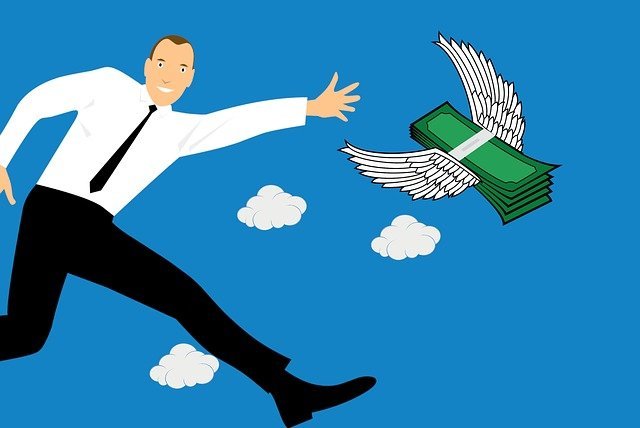How to protect savings from inflation? An overview of the possibilities

How to protect savings from inflation? An overview of the possibilities
There are many indications that higher prices will actually stay with us for a longer period, which means that money kept in the drawer and in bank accounts will lose value significantly. In order to prevent this from happening, it is worth thinking about what to invest in during inflation and what primarily comes from it. In this text we will focus primarily on investment proposals, but we will also briefly summarize the nature, scale, and reasons for the current price increases.
What is inflation?
First of all, inflation is the process of increasing the general (average) price level in the economy. This means that in order to talk about it, two basic conditions must be fulfilled.
First, inflation (in the classical sense) occurs when price increases persist for a long period of time rather than a month or two. Secondly, it must be global in nature, i.e. it must be concerned with many important and frequently purchased products and services. We’re talking here, among other things, about food, drink, fuel, interior design items, clothing, and hotel accommodations.
The Central Bureau of Statistics analyzes price changes in various expenditure categories on an ongoing basis. Each of them is given specific shares in the so-called inflation basket, on the basis of which the level of inflation and its changes are calculated. It follows that some goods (food, energy carriers) have a greater influence, while others (clothing, hotel accommodation) have a lesser effect on the value of this indicator.
Inflation and savings – you need to know this
When price increases affect many goods and are permanent in nature, you can buy fewer and fewer products and services for the same amount of money. If your earnings are also rising during the same period, and at a faster pace than prices in stores, then inflation shouldn’t be a big concern for you.
Remember, however, that in such circumstances, the true value of your savings decreases. If, for example, you keep 10,000 PLN in a drawer or in your bank account, then at 3% inflation for a year, its value will be only 9,700 PLN. If the ratio is exactly 3% in each of the following 4 years, then the real value of your savings in 5 years will drop to less than 8600 PLN. The loss will be significant, and we are still talking about a low level of inflation, close to what many central banks, including the Polish National Bank for Poland, consider optimal for the economy.
What is inflation in 2022?

Annual inflation of around 3% or even much less has been observed for a good few years, but today that level seems out of reach.
According to data published by the Central Statistical Office of Poland, in 2021, the average annual inflation in Poland was 5.1% and was the highest in 20 years. The situation looks even worse if we look at the end of 2021 and the beginning of 2022: in December, the year-on-year increase in prices of consumer goods and services amounted to 8.6%, and in January it was 9.2%. It is also important that the inflation processes intensified in a short time – it suffices to mention that the inflation rate in March 2021 did not exceed 3%.
Practically speaking, high inflation is a global problem today and affects many countries in different parts of the world. At the beginning of 2022, it was 6.6% in OECD countries, about 5% in Germany, and more than 7% in the USA. Poland, with a score of over 9%, along with Latvia, Estonia, Lithuania and Hungary, ranked first in the European countries with the highest inflation. Let’s add that in each of the above cases, the price hike readings from the beginning of the year were the highest in several dozen or even several dozen years.
How do we protect savings when inflation rises? Simple and safe methods
In conditions of rising prices, no matter who is responsible for it, it becomes necessary to protect savings from loss of purchasing value. When considering how to escape inflation, it is worth considering the following suggestions.
Term Deposits
Term deposits are the easiest and most willingly chosen method of protection against inflation. In 2020 and 2021, due to very low interest rates, they were less popular than usual, but since the Monetary Policy Board started raising the price of money, they quickly began to return to preference.
At the time of writing this article, the prime rate is already 3.5% (in September 2021 it was only 0.1%). Moreover, in line with the forecasts of economists and the signals sent by the Council, it will be increased further, which will translate into another increase in the attractiveness of deposits. Although you should not currently expect the return on your investment to be comparable to the rate of inflation, remember that it is essentially risk-free and easy to obtain.
inflation-linked bonds
The second major way to protect your savings from price hikes is to invest in bonds, especially those classified according to inflation. These types of instruments are issued by the state treasury and have the advantage that their utility consists of a fixed margin and a variable rate of 100% which depends on the price level in the economy. Unfortunately, this interest calculation mechanism only works from the second year, while in the first year the interest rate is adopted from top to bottom and is currently only about 2%.
The most common inflation-linked bonds are those with maturities of 4 years and 10 years, and shorter and longer-dated Treasury bonds are also available. Regardless of which one you are interested in, you will only pay 100 PLN for one bond.
What do you invest in during inflation? More serious assets
Many people, when looking for effective protection against inflation, are not limited to safe savings products. This is a reasonable approach, because, as a rule, it is advantageous to own an investment portfolio consisting of assets with different levels of risk and potential profit.
Is it worth investing in stocks, cryptocurrencies or real estate now?
You can count on higher rates of return by investing in stocks or cryptocurrencies , and even real estate for rent, but only if the market continues to thrive. Unlike treasury bonds or deposits, they are not safe forms of investment and do not guarantee profit. This also applies to real estate, which can periodically lose value, and quite a lot. By entering into any of these investments at the wrong time, you can risk huge losses.
It is worth noting that the above-mentioned asset groups gained in value strongly in 2020 and for a large part of 2021, and if we look back a few years, we will find that they have been thriving for many years. If you add to it, among other things, increased uncertainty related to the global economic and geopolitical situation, we get a picture of markets with poor prospects. This doesn’t mean that risky investments aren’t worth getting involved in now – they should be approached with caution.
Below you will find a brokerage account rating that will help you find the best place to trade stocks.
Or maybe an investment in gold?
Contrary to popular belief, investing in gold is also very risky. Although the metal actually gains value during high inflation, many people tend to buy gold bars and coins “on the hill” after prices have skyrocketed. Meanwhile, it is important to remember that the best time to buy gold is when inflation is relatively low and the economy is thriving. a reason? At that time, as a rule, they are relatively cheap.
What after inflation in Poland? Forecasts for the coming years
It is worth emphasizing that the rise in prices today in the world is the result of the simultaneous influence of many phenomena. They include demand factors, primarily mass printing of money, which was supposed to help businesses and consumers in the period of pandemic and lockdowns. In Poland itself, there were generous social transfers (more than 500, 13, 14 pensions), strong increases in the minimum wage, as well as low long-term interest rates, and thus cheap loans.
However, supply factors such as rising fuel, gas and electricity prices, or disrupted supply chains and shortages of semi-finished products and materials in the market seem to be more important today. We should expect that in the near future these elements will be responsible for high inflation, both in Poland and in other countries. Incidentally, they were the reason NBP raised its estimate of future consumer inflation. They showed that we should now expect 10.8% in 2022 and 9% in 2023. It will not be possible for a larger decline to occur until 2024 – when the inflation rate will be 4.2%. However, there are several analyzes that show that inflation in these years may be several percentage points higher.
The course of the war in Ukraine and relations of the West with Russia, which is a major supplier of gas and oil, will also play an important role in the development of inflation in the coming months, not in a short period of time, but within a short period of time. Twelve months or so. Unfortunately, there are many risks associated with these issues, because of which the NBP forecast may turn out to be significantly underestimated. They are also the reasons why investing in assets, such as stocks and cryptocurrencies but also gold or real estate, is now burdened with greater risk than it was in times of calm.




One Comment